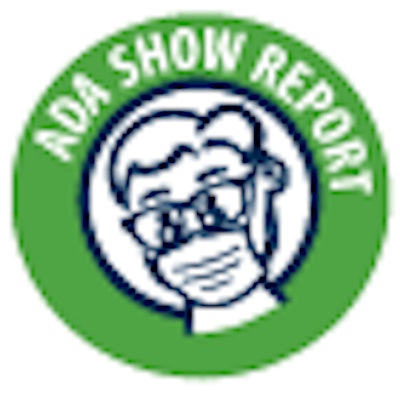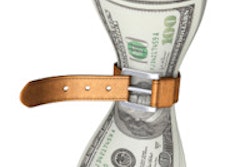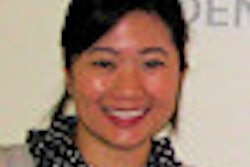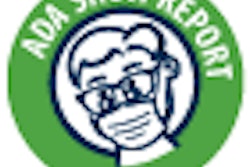
SAN FRANCISCO - The ongoing economic downturn has certainly contributed to the continuing decline of dentists' incomes, according to a panel on October 18 at the ADA Annual Session.
But other factors include the loss of dental insurance, reimbursements cuts by some insurance companies, and the mushrooming number of dental graduates -- and, ironically, improvements in oral health, which has resulted in less demand for traditional services such as restorations.
The session, "Has the Economic Downturn Changed Dentistry Forever?" drew a packed room of some 150 dentists, and many others were turned away.
Marko Vujicic, PhD, a health and labor economist who now heads the ADA's Health Policy Resources Center, noted that the downturn in adult dental utilization started in the early 2000s, five years before the recession began.
Most notably, the number of people with dental insurance has fallen significantly, as has medical coverage, according to Howard Bailit, DMD, PhD, professor emeritus at the University of Connecticut Health Center.
"Half the population doesn't have dental insurance, but those with insurance still have to pay for half of it out of pocket, making it seem far more expensive than medical care because medical insurance provides better coverage than dental insurance," Dr. Bailit said. "That's why people consider dental care expensive."
The broad middle class has not seen a significant increase in family income for more than 20 years, he added.
Dr. Bailit also cited the huge number of poor children who now get dental care under the Medicaid program, noting that 48 of 50 states have increased Medicaid dental utilization for children in the past decade, despite a large increase in the number of beneficiaries. But adults' utilization of dental services has fallen -- mostly among the financially hard-pressed, but even among adults in higher income groups, according to Vujicic.
Too many dentists?
Dr. Bailit cited two key factors in dentists' declining incomes: some insurance companies have cut reimbursement fees, and fewer people have dental insurance. In addition, improvements in oral health have reduced the demand for restorative procedures over the last 50 years. Restorations now account for 12% of the procedures performed by general practitioners, he said.
“We need to convince legislators that dental coverage is a good purchase.”
"My daughter is 46 years old and she's never had a restoration," Dr. Bailit said.
And there are now more dentists than ever before. If all the dental schools that are in the planning stage do eventually open, it sets up a long-term trajectory over the next several decades in which the number of dentists could increase to 260,000, according to L. Jackson Brown, DDS, PhD, former head of the ADA's Health Policy Resources Center and former editor of the Journal of Dental Education. But there is likely to be a market correction long before that level is reached, he noted.
While some critics attribute the huge unmet dental needs of many to a shortage of dentists, Dr. Bailit called it "absolute nonsense." There are currently 185,000 practicing dentists, and about one-third of them now say they aren't busy enough, Dr. Bailit said. In addition, 12 new dental schools have opened since 1997, 13 more are being considered, and many osteopathic schools are adding dental schools to their campuses, he noted.
"Where are they going to get the patients?" Dr. Brown asked, referring to schools in rural areas. "Existing practices are much more competitive for patients."
When one dentist asked what impact preferred provider organizations and health maintenance organizations have had on dentistry, Vujicic answered, "Who pays doesn't matter; cost pressures are growing through all channels of dental financing, so who's paying is irrelevant. This is where healthcare reform is going, no matter who's elected or what the Supreme Court does. The paradigm of cost pressures will continue."
Dental practice costs are a serious problem, Dr. Bailit said, pointing out that 70% of costs go toward overhead. "It's having a huge impact," he said. "If we can get it down to 50%, it would be great."
He attributed much of dentists' costs to the high cost of advanced technology. "We need to provide basic care; a lot of the technology is used for complex procedures," Dr. Bailit said.
Becoming big business
Another factor is corporate and group dentistry, which has grown significantly in the last few years in part because the model could be leveraging efficiencies, Vujicic said. But he doubted it will dominate the market in five years, noting the issue needs further investigation.
In the last 15 years, the number of small practices with one or two dentists has declined, while the number of group practices has been growing 14% annually and has been doubling every four years, Dr. Bailit noted.
“This is the beginning of a major change.”
"This is the beginning of a major change," Dr. Bailit said, noting that the medical profession has undergone a similar transition. But the percentage of dentists working at group practices is still relatively small, according to Dr. Brown.
Young dentists now want more flexibility in their work schedules, as they seek to balance their careers with their personal lives, Vujicic said. They also question whether the tradeoff in flexibility is worth the additional financial gain working for a corporate or group dental chain, he noted.
Most new dentists are "between a rock and a hard place" because they can't find associate positions with private dentists, Dr. Bailit said. They can't afford to buy their own practice and are saddled with huge debts, he added.
As a result, many are turning to federally qualified health centers (FQHCs) for work because they offer competitive salaries, he said.
The National Health Service Corps offers tax-free loan repayment programs that offer up to $60,000 for two years of service and up to $170,000 for a five-year service commitment. And continued service provides the opportunity to pay off all student loans.
Currently, there are 820 FQHCs nationwide employing 3,000 dentists.
Another result of the economic downturn is that fewer dentists can afford to retire as planned, and 25% of them have delayed retirement for at least four years, Dr. Brown noted.
"Many of my classmates are still practicing in their 70s," he said.
Community coalitions needed
All the panelists agreed that organized dentistry must make coalitions with community groups and advocates for the underserved to effect significant changes.
In the view of policymakers, the situation has improved because more children are getting dental care, oral health is improving, and costs are being kept down, the panelists noted, so the dental profession has to carefully articulate its concerns.
Vujicic explained: "What is our argument for saying there is a problem if more kids in Medicaid are seeing a dentist, and the average cost of care is going down?"
Dr. Brown concurred: "We need strong evidence to get a sympathetic response," adding that dentistry has been a victim of its own success. "The percentage of GDP [gross domestic product] for dentistry has plummeted because the profession has been so successful with prevention," he added. "We need evidence that doesn't look self-serving."
More must be done to lobby lawmakers to provide or mandate coverage for dental care besides that mandated for children under the Affordable Care Act, the panelists said.
Dental care is going down among people between the ages of 20 and 64, according to Dr. Brown. "That's where the big-ticket items are," he said.
Many states have successfully sued the federal government to get increases in Medicaid programs, Dr. Bailit noted.
"We need to convince adults of the vital importance of oral care," Vujicic said. "We need to convince legislators that it [dental coverage] is a good purchase. It saves emergency room costs, results in fewer days off from work, and increases wages."
Another factor, he said, is America's growing Hispanic population, which traditionally uses less dental services.
Changing attitudes about who should pay for dental care also has come into play, the panelists noted.
One Colorado dentist recalled a patient who balked at spending $1,500 for orthodontics after spending $6,000 on a new bike.
"The attitude has become, 'We are entitled to dentistry,' " he said. "But it's not an entitlement -- it's a need."
In times of tight money, people think discretionary income shouldn't be used on healthcare, especially dentistry, the panelists observed.



















